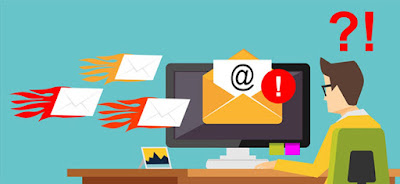WHAT IS EMAIL BOMBARDMENT?


Boot sector viruses are one of the oldest forms of computer viruses. They infect the boot sector or partition table of a hard drive so that they start the moment the computer is turned on. Here is everything you need to know about them and the threat they pose.
It affects system with the hard drive. Mainly,
PC-based computers are affected more frequently, although a Mac system may be affected
as well.
What
is boot sector virus?
A boot sector virus is not a specific virus, it
is a particular way that viruses can affect your computer. A boot sector is a
physical sector on your hard drive that is required to initiate the boot
process and load your operating system.
By placing a virus here, it means that the virus
is activated every time you start your computer, even before your operating
system starts to start. Often times, you won't even realize it's happening,
making the threat even worse.
How
does the boot sector virus work?
Each boot sector virus works differently,
depending on its objective. Because they are located in the boot sector of your
hard drive, before the operating system starts, it is possible for a boot
sector virus to do a lot of damage.
Some can cause irritating problems, like an
adware virus or malware, but others can work like Trojans, monitoring what you
are doing at all times and stealing your information in the background. The
ransomware also often takes advantage of one's boot sector, keeping the
contents of your hard drive for ransom.
Boot sector viruses can even spread to other hard
drives that you have installed or physical media that you have connected to
your system.
It is important that you remove the threat as
soon as possible so that the problem does not get worse over time.
How
do I know that I have the boot sector virus?
Boot sector viruses are not always obvious. It
often depends on what type of virus you have been infected with.
Others can cause regular data problems, causing
your files to disappear from partitions or suddenly causing your computer to
act unstable and crash frequently. Error messages such as "invalid system
disk" can also appear regularly.
It is important to run regular antivirus software
scans or use malware detection tools to detect potential problems before they
get worse.
How
did I get the boot sector virus?
Boot sector virus is received by floppy disk or
CD, basically from infected device
Nowadays, however, it is also possible to get
infected with malware that is downloaded or received through email attachments.
It is important to be aware of the files you download and the websites you
access.
Using of good quality antivirus will help you
in getting rid of this virus. Antivirus software may
take several hours to complete, depending on the speed of your computer, but it
also offers you the best methods to remove malicious files.
In the
worst case, some antivirus programs also include physical bootable media so
that you can more easily remove a boot sector virus.
It is also worth installing a malware removal
tool that helps detect any other malware on your system, long before it causes
substantial problems on your computer.
Unlike other viruses, System Restore and
formatting the hard drive are not effective means of removing a boot sector
virus.
However, it is possible to use a free bootable
antivirus software tool to detect problems before starting Windows.
Ways
to not get back virus?
There are a few key ways in which you can reduce
your chances of getting infected with a boot sector virus again (or being
affected by any other virus). There are also specific tips that directly relate
to boot sector viruses.
Update your antivirus and malware
protection software. Antivirus should be kept updated.
Be careful with physical media. Be careful with
the USB sticks you put in your computer. This is one of the key ways that you
can be affected by a boot sector virus. Please consider the USB memory source
before use, and never put it in your computer before starting the system.
Be attentive. Boot sector viruses can easily
spread between different computers on the same network. Be careful about the
networks that your system connects to.
Don't download suspicious files. Consider where
you are downloading files from and always run virus scans before opening them.
Conclusion
In short, the boot sector virus can enter in your device
through physical device which may be infected and can act like malware and Trojan
both and to be safe from it and keep your device healthy, we should use antivirus that fights
with the virus and give us complete security.
Comments
Post a Comment